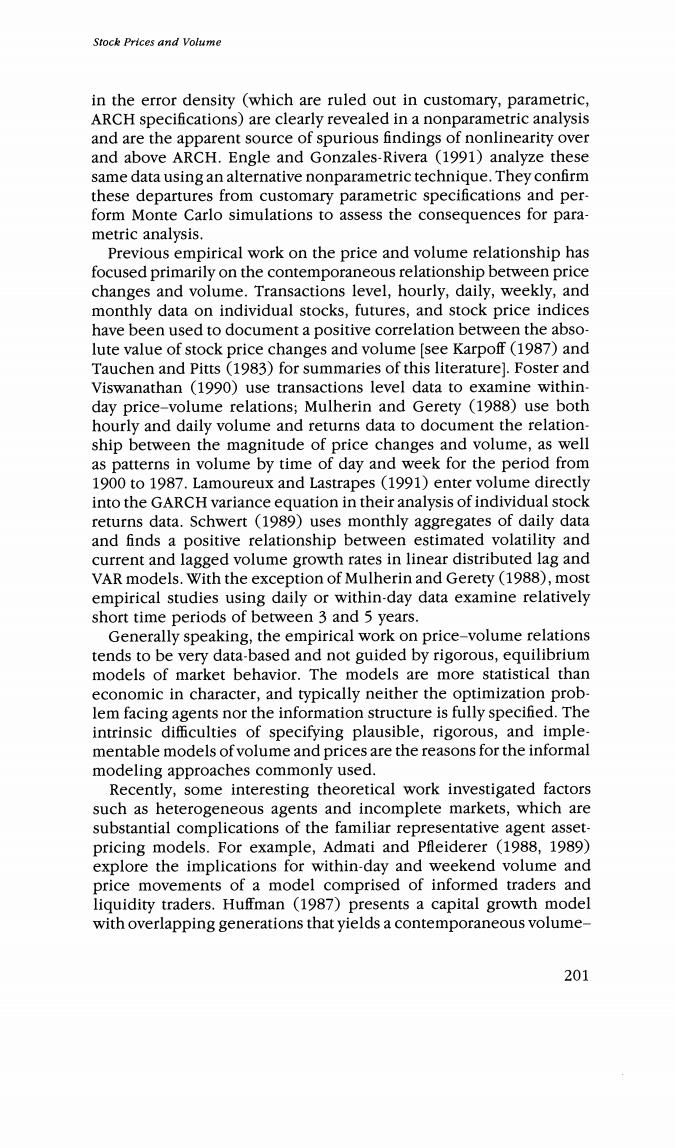正在加载图片...

Stock Prices and Volume in the error density (which are ruled out in customary,parametric, ARCH specifications)are clearly revealed in a nonparametric analysis and are the apparent source of spurious findings of nonlinearity over and above ARCH.Engle and Gonzales-Rivera (1991)analyze these same data using an alternative nonparametric technique.They confirm these departures from customary parametric specifications and per- form Monte Carlo simulations to assess the consequences for para- metric analysis. Previous empirical work on the price and volume relationship has focused primarily on the contemporaneous relationship between price changes and volume.Transactions level,hourly,daily,weekly,and monthly data on individual stocks,futures,and stock price indices have been used to document a positive correlation between the abso- lute value of stock price changes and volume [see Karpoff(1987)and Tauchen and Pitts (1983)for summaries of this literature].Foster and Viswanathan (1990)use transactions level data to examine within- day price-volume relations;Mulherin and Gerety (1988)use both hourly and daily volume and returns data to document the relation- ship between the magnitude of price changes and volume,as well as patterns in volume by time of day and week for the period from 1900 to 1987.Lamoureux and Lastrapes (1991)enter volume directly into the GARCH variance equation in their analysis of individual stock returns data.Schwert (1989)uses monthly aggregates of daily data and finds a positive relationship between estimated volatility and current and lagged volume growth rates in linear distributed lag and VAR models.With the exception of Mulherin and Gerety (1988),most empirical studies using daily or within-day data examine relatively short time periods of between 3 and 5 years. Generally speaking,the empirical work on price-volume relations tends to be very data-based and not guided by rigorous,equilibrium models of market behavior.The models are more statistical than economic in character,and typically neither the optimization prob- lem facing agents nor the information structure is fully specified.The intrinsic difficulties of specifying plausible,rigorous,and imple- mentable models of volume and prices are the reasons for the informal modeling approaches commonly used. Recently,some interesting theoretical work investigated factors such as heterogeneous agents and incomplete markets,which are substantial complications of the familiar representative agent asset- pricing models.For example,Admati and Pfleiderer (1988,1989) explore the implications for within-day and weekend volume and price movements of a model comprised of informed traders and liquidity traders.Huffman (1987)presents a capital growth model with overlapping generations that yields a contemporaneous volume- 201